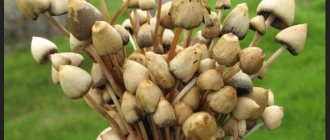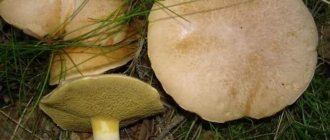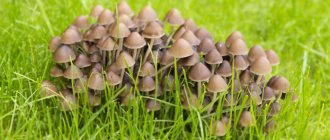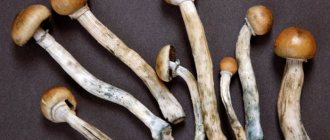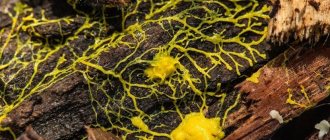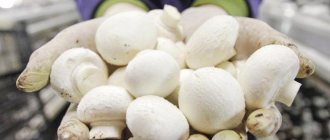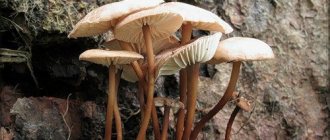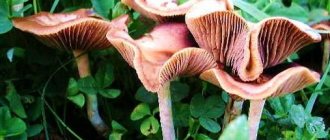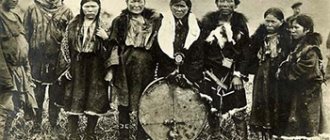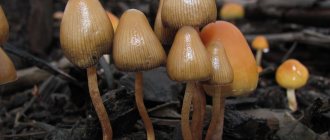OP, were you looking for visuals?
If so, I’ll throw in some good news.
>>149399598 Until the forest is green and beautiful, don’t go!
For music, you can take Elvish, maybe a couple of tracks from Madoka, they’ll work great. Focus on magic!!
Don't do anything with boiling water.
>>149399822 Why the fuck should I pay attention in a normal thread?
>>149400200 There will always be people who will answer them, this method only works if the target wants your attention, and not everyone’s >>149400242 I’m just interested in the reason why and why the fuck in this particular thread.
>>149400385 You’ve either never eaten a psycho with women, or maximum level pussy licking, the only thing they can do during a trip is look at one point and mutter to themselves: “holy shit, fuck.”
>>149400472 I know what I'm talking about. The only thing is that hugging with them is awesome, and fucking, of course, but they don’t really like to discuss anything or talk during a trip. And I wouldn’t call them finished, especially when they are sober.
>>149400336 >There will always be people who will answer them. We need to feed such people mushrooms so that they understand everything. The action of each creature is motivated by the desire to acquire some specific resource, including attention. By identifying the resource you are looking for and controlling its supply, you can correct behavior. Don't want to see attention whore in the thread? Ignore the attention whore. Bad girl, here's your ignore, don't behave like that! Negative reinforcement. Like any other stupid animal, it will begin to experience new strategies for acquiring resources, which, in turn, can already be considered “correct” by us and be encouraged by the attention it seeks. Positive reinforcement. The main thing is not to overdo it with negative reinforcement, so as not to instill in her complete helplessness.
>why and why the hell in this thread? It seems to her that she belongs to some global caste of drug addicts, so we should like her, because we are like kindred spirits. No.
There are dozens of species of mushrooms that, in the process of evolution, have learned to produce trymptamine-type substances. Among them, psilocybin and its analogues/derivatives have hallucinogenic properties. Single use resembles the effects characteristic of taking LSD. Symptoms depend primarily on dose, mood and environmental conditions.
Appearance of psilocybin mushroom
Their application is unique. Manuscripts found describing Aztec culture tell of rituals in which mushrooms were used to induce hallucinations. The Mayan priests also resorted to their help when conducting religious ceremonies. Used in Central America for a long time. According to the Indians, they are divine. Anyone going into the forest should be able to recognize psilocybin mushrooms in order to protect themselves from the serious consequences of their use.
Psilocybe is easy to recognize by its appearance: the cap is yellow, olive or red, and the surface is dry or wet. Its location and microclimate play a role in this. The upper plate is fused to the leg.
Hallucinogenic mushrooms are also called magic, magic or psychogenic. These narcotic mushrooms contain the substance psilocybin, which causes hallucinations in humans. Let's figure out what type of drug this is, why it is an analogue of LSD, and what are the consequences of using mushrooms.
Best video:
Effects of psilocybin on the body
The active ingredient that has made magic mushrooms popular for thousands of years is psilocybin. According to its chemical structure, the substance can be classified as tryptamines, which resemble serotonin. It is believed that the natural hallucinogen competitively activates special neurotransmitter receptors in the human brain - 5-HT2.
The concentration of psychedelics in different types of mushrooms varies. Psilocybe cubensis is widespread in the illegal environment. Psilocybe semilanceata is found in Russia. They are equated to drugs in most countries, so participation in trafficking is subject to criminal liability.
- Around the clock
- Anonymously
- For free
Atlas of hallucinogenic mushroom species
There are two main types of mushrooms that cause hallucinations: fly agaric and psilocybin. There are more than two hundred varieties of mushrooms that can give you a drug trip.
Psilocybin mushrooms with the active ingredient psilocin are more popular among drug addicts due to their low toxicity, unlike fly agaric mushrooms. In the scientific literature, these varieties of mushrooms are classified as poisonous, since their effect is considered to be poisoning. In addition, in addition to psilocybin, they contain other toxic substances.
The genus of Psilocybe mushrooms has about 140 species and they grow naturally in the United States in the humid forests of Mexico and Central America.
The most studied species of all is the Cuban Psilocybe due to the ability to breed it under artificial conditions. Psilocybin is also found in some species of Fiberwort, Gymnopilus and Paneolus.
Varieties of psilo mushrooms
It is difficult to find a place where they do not grow . This species is considered 100% saprophytic . Unlike parasitic and mycorrhizal ones, they exist due to the decomposition of organic substances. They take root well in places where there is no longer any nature, but where asphalt has not yet been laid. Another feature of mushrooms is their love to settle near people: they are almost absent in the wilderness.
The main habitat is wet meadows and clearings. Some mushrooms turn blue when scrapped . No one knows why this happens, perhaps it is a reaction of psilocin to the air.
- Psilocybe lanceolate. Has an unattractive appearance. Habitat: Leningrad region and Far Eastern region. It grows from August to October. Grows in forests, swamps, peat bogs. It has a hemispherical, conical, pointed tip, yellow, brown, slightly darker cap towards the center. The edges are wrinkled and pleated with a thin, slimy skin. A hat with a cross section of 0.5-1.5 centimeters with narrow cream-colored plates. The leg is cylindrical in shape with an internal cavity from 2.5 to 8 centimeters long, its thickness is 0.1−0.3 cm. It has a bitter, odorless pulp.
- P. subbalteatus. Habitat: central regions of the Russian Federation and Siberia. The mushroom is conical in shape, with a raised central part of the reddish-brown cap, a cross-section of 3-5 centimeters and a ribbed edge. The plates are gray with black spots. The brownish cylindrical leg is 6−9 cm long and 0.3−0.5 cm thick. The whitish-gray pulp has an unpleasant odor and a bitter taste. Dried mushroom has no taste.
- Psilocybe semilanceolate, popularly called “sharp conical bald head”, “freedom cap”, “merry girl” - is a family of Strophariaceae. They contain psilocybin and psilocin, which have a psychoactive effect and cause hallucinations. Lamellar, with a cap with a diameter of 5−25 mm and a height 1.5 times its width, semicircular or conical with a small tubercle. It has rolled edges with a smooth surface. Thin-fleshed. In young mushrooms, the skin on the cap comes off very easily. The color is beige or brown with an olive tint. The pulp turns blue when damaged. The leg is light, flexible and smooth. The plates are dark and come in black. Grows in grass on cattle pastures, in damp places, on hummocks. The growth period for psilocybin mushroom is from August to November.
Consequences of eating hallucinogenic mushrooms
Psilocybin mushroom spores are sold online and can be purchased through the mail. This is how drug dealers circumvent the law. However, everyone who decides to indulge in this psychedelic must understand a simple thing.
The decision to try drugs comes to a person either out of ignorance of the consequences for health and life, or due to the desire to escape from reality. From various sources you can hear that hallucinogenic mushrooms do not cause physical dependence and that almost the only way to become a great genius is to open your consciousness. However, everyone must understand that for every genius there are a hundred crazy people, here are the consequences of eating poisonous mushrooms.
The differences between psilocybin and LSD are small and both are psychedelics, no longer affecting tissues and organs, but the psyche, the human consciousness.
If you are looking for information about the benefits of hallucinogenic mushrooms and you are interested in this topic, ask yourself what you want to escape from, what you are not happy with in life.
Let's be honest, we watched a lot of videos when we were looking for interesting material for you. And you can check for yourself, but you will not find a single person with signs of high intelligence or traits of a genius. Everyone who talks about how cool it is to eat mushrooms and catch a trip looks, to put it mildly, strange.
We cannot write here that hallucinogenic mushrooms are as dangerous as the drug krokodil or heroin. This is wrong. But in reality, no one can say what potential harm lies in psilocybin.
.
There is little research on this topic, since this substance was quickly classified as a dangerous drug. Therefore, there is no data on real harm, which may appear several years later. But you have to ask yourself - why become a test subject and experiment on your own life. Moreover, the human brain is the darkest and most unexplored matter, and mushrooms affect it specifically.
If the article “Hallucinogenic (psilocybin) mushrooms - an analogue of LSD” was useful to you, do not hesitate to share the link. You may save someone's life with this simple solution.
The effects begin to be felt between 20 minutes and one hour after consuming the mushrooms. The first signs are a feeling of euphoria and anticipation, as well as tingling throughout the body.
After the onset of action, it usually takes 30 to 45 minutes before the “peak” occurs.
Often at this stage there is a feeling of nausea.
Eating
Drug addicts try to use psilocybin mushroom as a hallucinogen, but this is very dangerous - it is not edible and is even poisonous.
The effect of the hallucinogen lasts about 7 hours . Begins to act after 30-50 minutes. Since consciousness changes greatly, madness is possible, that is, complete loss of reason. To get out of this state, you will need the help of a specialist. After the effect of the mushrooms ends, there may be an aftereffect for several days, which is expressed as depression.
Bad “trips” under the influence of hallucinogenic mushrooms
Eating hallucinogenic mushrooms allows a person to have a more “natural” experience than using . “Magic” mushrooms can plunge a person into a fabulous state. Colors can appear so bright and alluring that a person can taste and smell them.
The downside of using hallucinogenic mushrooms is a “bad” trip. Instead of a pleasant, peaceful experience, a person may spend several hours in a world that looks like your worst nightmare. The difference between a bad trip and a bad dream is that the person cannot wake up at any moment. He is stuck in this experience until the effects of the mushrooms wear off.
The hallucinations that come with a bad trip can be absolutely terrifying. As a result, the user may feel anxious and afraid for several hours. In more extreme cases, paranoia may occur. One of the reasons for a bad “trip” may be the depressed, depressed or anxious emotional state of the user before using hallucinogenic mushrooms, which is enhanced by their action.
Legal restrictions
Despite the fact that psilocybes were not officially recognized as drugs, their alternative status became the reason for prohibiting the unauthorized collection, use, and even more so the distribution of such raw materials.
The Russian Federation in this regard is no exception to the rule, although the absence of a criminal article for the collection, storage and consumption of mushrooms, of course, makes its negative contribution. Every year, thousands of people continue to poison themselves with this potion in search of thrills, subsequently justifying their own actions as incompetence during a “silent hunt.”
And if a single use of such fruits can still occur without consequences for health, then regular experiments of this kind can easily provoke schizophrenia. This is what you should remember first of all if the ridiculous thought of trying a forbidden mushroom comes to mind.
What are psilocybes
These mushrooms have hallucinogenic properties, which is why they are also called magic mushrooms. In some cultures, psilocybes are still endowed with supernatural properties. Usually mushroom pickers call them toadstools and are not collected due to their unsightly appearance and unpleasant taste.
These gifts of nature contain two alkaloids - psilocybin and psilocin. The first one is very poisonous. Once in the body, it is destroyed in the intestines and converted into psilocin, which is half as toxic. The result is an effect comparable to taking a dose of LSD (Lysergsäurediethylamid - a semi-synthetic drug).
Narcotic properties were known even among ancient peoples; this is evidenced by the names that these mushrooms bear in one area or another. By using hallucinogenic decoctions, shamans and sorcerers of many tribes “communicated with spirits.”
In the modern world, for part of the population, psilocybe serves as an alternative to drugs. Therefore, their collection, preparation and cultivation is prohibited.
Official medicine classifies magic mushrooms as poisonous. But to guarantee death, many toadstools must be consumed in very large quantities. In addition, most of them have not yet been sufficiently studied. Because of this, some species of psilocybe mushrooms are considered conditionally toxic. Some may accidentally end up in the basket and be eaten without any unpleasant consequences.
Truly deadly false mushrooms are quite rare. They disguise themselves as related species. Only an experienced eye can distinguish them.
Types and areas of growth
There are a lot of similar mushrooms with psychoactive effects in the world and they grow in different parts of the world. The most potent are those illegally exported from India, Indonesia, South America and Mexico. In Russia there are about 500 species of hallucinogenic mushrooms.
These fungi are absolute saprophytes, that is, they feed on organic remains. They love to settle close to people, in semi-inhabited places. They occupy places where the natural balance is already disturbed (fields, livestock grazing, mowing meadows) and there is a large amount of cow or horse manure. In the complete wilderness there are practically none of them.
The following mushroom genera contain psilocin:
- paneolus,
- gymnopil (14 species with poisons that affect the psyche),
- fiber (4 types of these mushrooms out of 5 containing a hallucinogen are deadly poisonous),
- psilocybe (150 species have been described, more than 115 contain narcotic substances).
The most poisonous part is the leg. The cap contains less active substance.
Most species are simply unpleasant to taste; the percentage of toxic substances in them is small. Some varieties can cause severe hallucinations, but do not lead to death.
Psilocybe semilanceolate
Psilocybe semilanceata is well known among the people and even has appropriate “funny” names: prushka, merry, cap of liberty, sharp conical bald head. Grows in India, Australia, South America. On the territory of Russia it can be found in the Moscow region and in other territories with a similar climate.
The active ingredient is psilocybin. Contained in both dried and fresh mushrooms. People who use drugs compare the effect of the mushroom with LSD, only a little softer.
Psilocybe semilanceata is prohibited for circulation on the territory of the Russian Federation. It is precisely the spread of these toadstools that law enforcement agencies are actively fighting against.
Outwardly it looks like a small mushroom on a thin stalk with a sharp conical cap. Height - up to 3 centimeters. Color - brown with an olive tint. Prefers to occupy fields, rarely visited meadows, and wet places. They can even be found on grassy sports fields.
It grows especially actively in the fall, when the air temperature drops to +5 degrees Celsius, but can also occur in the summer.
In Europe, the first medical report of poisoning appeared in 1799, when a British family ate mushrooms collected from London's Green Park. It was Psilocybe semilanceolata.
Stropharia shit
This is a small mushroom on a thin stalk, which people call in an extremely unappetizing way - poop bald spot. The cap is quite large, shiny, brown, round in shape, with small uneven scales along the edges. Color - from light to dark brown.
It prefers manure heaps as a substrate, where stropharia can be observed individually or in groups. The most active growth is from mid-August until cold weather. Distributed in Mexico and the USA. It is extremely rare in Russian latitudes.
Stropharia has become popular due to the psilocybin it contains. Previously, ritual potions were made from it.
Yar verdigris troischling
An unusually beautiful small mushroom, bluish-green in color. Externally they resemble a champignon. It prefers to settle on tree stumps, in grass, sometimes even in horse or cow dung. Found in Europe and North America.
There is a related, more beautiful view. It's called sky blue stropharia. It grows along roads, in grass and even on lawns. But it is very rare.
Troischling is not poisonous. But they don’t use it for food because it is absolutely tasteless (it looks like a radish). Even if it accidentally gets into the cauldron, it is impossible to get poisoned by it.
There is still debate about its hallucinogenic properties. They exist, but they are very small, since the dose of psilocybin there is absolutely insignificant.
Bell asshole
Paneolus campanulata (bell asshole) is a ubiquitous small mushroom that grows in colonies. It is also called bell-shaped dung beetle or moth beetle. Grows on well-fertilized soils or simply on manure from April to December. In Russia you can find them near cowsheds, chicken coops and stables.
Outwardly, an absolutely inconspicuous mushroom: on a thin stalk with a bell-shaped cap, very fragile. It stands out among other dung beetles for its regular shape. Color - grayish-brown, sometimes whitish. Height - up to 8 cm. Active ingredient - psilocybin.
Hay beetle
These magic mushrooms are ubiquitous. Can be found in pastures, river valleys and even in flower beds. A small mushroom with a light brown cap with a dark edging. In young specimens it is yellow or cinnamon-colored. They grow in small groups from spring to early December.
The body of the dung beetle contains quite a lot of psilocybin, the activity is medium. It was noted that once ingested, the effect of the substance can begin within 20 minutes, especially if the person was hungry. The effect is similar to the drug LSD. But in case of accidental ingestion, poisoning is not considered severe. Does not cause physiological dependence. Although there have been cases of psychological “sticking” to these mushrooms. With prolonged uncontrolled use, personality disintegration is possible.
Leopard mushroom
There are two types of mushrooms called leopard mushrooms, both of which are dangerous when consumed. They prefer the temperate climate of the Northern Hemisphere.
Panther fly agaric
Leopard mushroom or Amanita pantherina is similar in appearance to a regular fly agaric mushroom, only smaller in size and the color of the cap is brown. In Russia it is also called gray fly agaric.
Very poisonous. The concentration of psilocybin is high. Symptoms of poisoning are similar to acute alcohol intoxication, after which a person falls asleep. Medical attention must be provided as it can sometimes lead to death.
It is quite rare. It is almost impossible to accidentally pick up and use them due to their catchy appearance.
Leopard print row
Leopard row (tiger) is an extremely poisonous mushroom, but, fortunately, quite rare. Found in central Russia from August to late autumn. Prefers coniferous forests, but can even grow in parks or meadows
The cap can reach 12 cm, but usually it is up to 10 cm in size. Scales are scattered over the surface, the pattern slightly resembles a leopard print. Young specimens have a round cap and a thick stem. In adults, the leg extends, but a thickening remains at the root. Color - from light gray to silver-bluish or beige.
There are a lot of popular edible mushrooms among the rows. Therefore, you need to make sure that the toxic specimen does not end up in the basket with them. The trouble is that tiger grass also has a pleasant taste and aroma - this doubles the danger. If it has been cooked and eaten, then after 20 minutes signs of gastrointestinal poisoning appear.
As soon as diarrhea, nausea, vomiting, salivation, or abdominal pain begins, it is necessary to urgently call an ambulance.
Insufficiently studied, the toxin contained in the mushroom body has not yet been identified.
Semicircular troischling
These graceful, fragile, psychedelic mushrooms love to live in livestock grazing areas or manure. The second name is hemispherical stropharia. The height of the troischling is up to 15 cm, the cap can be up to 3 cm in diameter.
The color of stropharia is whitish, yellowish-lemon, and sometimes orange.
Groups of this treshling can be found from late spring to autumn in cool regions of Russia.
The mushroom contains psilocybin. Its quantity is very small. It is difficult to get poisoned, but with a large dose, unpleasant symptoms appear. The state will be similar to that which occurs after using LSD.
Fly agaric red
The red fly agaric is known to everyone. It is distributed on all continents, including Australia and America.
This bright, handsome hero of Russian fairy-tale folklore is absolutely inedible. However, it is famous for the fact that since ancient times shamans have used it in their rituals. It has pronounced toxic and psychotropic effects.
The mushroom is very attractive and large. The cap is red (shades may vary) with white scales. In young fly agarics it is round, and in adults it opens into an umbrella.
The body of the mushroom contains a large number of alkaloids (muscarine and others). Symptoms of poisoning can appear within 20 minutes after eating them.
Content:
- Consequences of consuming psilocybin mushroom and toadstool 1.1. Impact on the body 1.2. Toadstool poisoning
- External differences
In Russia, in addition to the familiar and beloved chanterelles, honey mushrooms and boletus, other mushrooms grow that are dangerous to eat. Psilocybin mushroom and toadstool, fly agaric and pig mushroom - nature does not tolerate monotony. We usually pass them by, but some people put them in their basket, and not by mistake! The desire to see color music, hear color and watch how static objects move overcomes the natural instinct of self-preservation. Unfortunately, there are people who lack manifestations of natural strong emotions in life, and they look for another, sometimes dangerous, opportunity to experience them.
